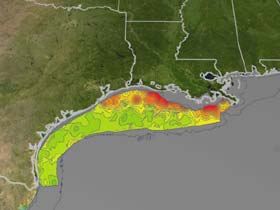 |
| Derek Wall |
Capitalism has failed. Leaving the care of society to the market has
led to massive inequality, climate chaos and financial crisis. The system is
indeed one of zombie economics, the doctrine is dead but the beast still walks
amongst us. It reminds me of the cartoons where Bugs Bunny runs over the edge
of the cliff but, not noticing that he has done so, continues to march on air
until realization strikes and the silly rabbit plummets to the ground.
However while capitalism is in crisis, alternatives are not obvious to
all. The binary choice has been market versus state. If you have more market
you have less state or vice versa. State provision of goods and services seems
innately problematic. A central plan reduces choice, fails to promote
creativity and may be vastly inefficient. When markets fail, neoliberals can
point to the failures of a soviet style economy to justify the continuation of
a system of supply and demand.
There are number of objections that can be made to this. Fredriedrich
Hayek argued, seemingly convincingly, that planners would lack the information
necessary for effective planning. Yet markets increasingly provide perverse
signals and transmit false information. Think of the way that marketisation has
led to commodification of services such as education and housing. Markets lead
to speculation and speculation leads to catastrophe. Planning is problematic
and imperfect, but marketisation gradually infects an economy with chaos.
Planning can be made democratic by measures such participatory budgeting.
Likewise the National Health Service is an excellent example of state planned
economic activity that works, although to work better the pharmaceutical
companies that make medicine so expensive and the corporations that spend £ms
marketing junk food would need tackling.
However what is emerging fast is the alternative of a commons based
economy. Peer to peer, social sharing, collaborative consumption, commons,
economic democracy are all terms that cover economic activity that moves beyond
the market and the state, based on cooperation and harnessing human creativity.
The economics of sharing is essential to overcome climate change and
other environmental ills. If we can share goods we can reduce our impact on the
environment while getting access to the things we need. Car pools might be seen
as a good example and there is a role for state provision of shared resources —
good public transport is an example. Boris bikes are a good example of social
sharing, we don’t privately own the bikes, its just a shame that the bikes
taunt us with Barclays label and only extend to Central London.
The commons economy moves us beyond commodification. Goods are
produced because they are useful and/or beautiful not just to generate cash. An
economy of free can evolve, capitalism to some extent generates artificial
scarcity, keeping us insecure to get us working and consuming.
Commons economies are based on the principle of usufruct. This is the
concept that we can use something as long as we leave it in a good or improved
state for others. Its the key principle to my mind of effective green politics
and socialism. Indeed Marx observed in Capital, Volume III:
“Even an entire society, a nation, or all simultaneously existing
societies taken together, are not the owners of the earth. They are simply its
possessors, its beneficiaries, and have to bequeath it in an improved state to
succeeding generations as boni patres familias [good heads of the household].”
I don’t think utopia or blueprints are helpful and we don’t have to
answer every question about the practicalities. We must recognise that
capitalism has failed and struggle practically and intellectually for an
alternative. Its not a matter of imposing a social sharing economy but of
fighting commodification. The corporate world is keen to enclose the commons of
cyber space, fighting legislation such as ACTA and SOPA is essential. The
battle to re-legalise squatting is another example. Housing in the UK is
obscenely commodified, in the USA there are more empty homes than homeless
people. Leaving buildings empty as investment chips should be a crime, homeless
people showing creativity and using space should be celebrated.
To me the key moment of class struggle is the struggle over property
rights. Those who want an economy that works should focus on property rights.
The banking collapse has lead to debt and debt to austerity. The agenda is to
use debt to privatise more of the economy so education, health care, water
provision are owned by distant owners and swopped around to make profit. A
commons based economy puts these and other resources into the hands of local
people to manage not for short term greed and the whims of bond markets but for
long term need. Politics is essentially about property rights and the often invisible
battles must be made visible and won.
There is an intellectual task to show that commons, perhaps termed
communism, or democratic ownership of society by communities, works. The two
towering figures here are Marx and Elinor Ostrom. In many ways they are polar
opposites. The late great Elinor Ostrom won a Nobel Prize for her work showing
the common pool property was an effective way of managing natural resources.
She came from a liberal background and her work is very much about micro
economics. Her work was based on detailed studies showing how an economy based
on cooperation can be created. I would highly recommend both her Governing the
Commons and her final book writing with Amy Potteete and Marco Jannssen
‘Working Together’.
Marx was, well, Marx! One of his earliest pieces of writing dealt with
the removal of commons rights to German peasants — it became illegal for them
to pick up fallen wood from forests. In Chapter 27 of Capital One he showed how
the English commons had been stolen and enclosed by an elite. His ethnographic
notebooks where he focused on indigenous commons were astonishing. For Marx the
rational creative society is a self-owned one based on democratic control i.e
the recreation of the commons. The working class can through revolutionary
action transcend capitalism and create a communist society. Its about commons
for Marx not top down bureaucracy.
Both Marx and Ostrom were true political ecologists, keen to show how
the wrong kind of human institutions and practices destroyed the environment.
Ostrom’s work is cautious, pluralistic and rejects panaceas, while celebrating
the commons, she does not reject the market or forms of state action. However
her work does explore the micro foundations of a non monetary economics,
something most economists would find unthinkable! While a far from easy read,
‘Working Together’ has astonishing implications. She spent decades building a
more nuanced and creative way of thinking about human economic behaviour,
revolutionary stuff indeed.
The
struggle practically and intellectually has to be about rolling back
commodification and regrowing a gift economy. Commons economies don’t abolish
injustice or guarantee sustainability but we can do better than being slaves to
an economy which marches to the beat of the bond markets. Whether Syriza in
Greece, the work of ecosocialists, the experiments of workers control and
solidarity economies in Latin America or a thousand other examples alternatives
to a bought and sold world are emerging.
Derek Wall is former Principal
Speaker of the Green Party of England and Wales. He is a founder member of
Green Left and the Ecosocialist International, his books include the No
Nonsense Guide to Green Politics
Further Reading
Derek Wall – Prosperity
without growth, economics after capitalism
http://www.sd-commission.org.uk/publications.php?id=771






